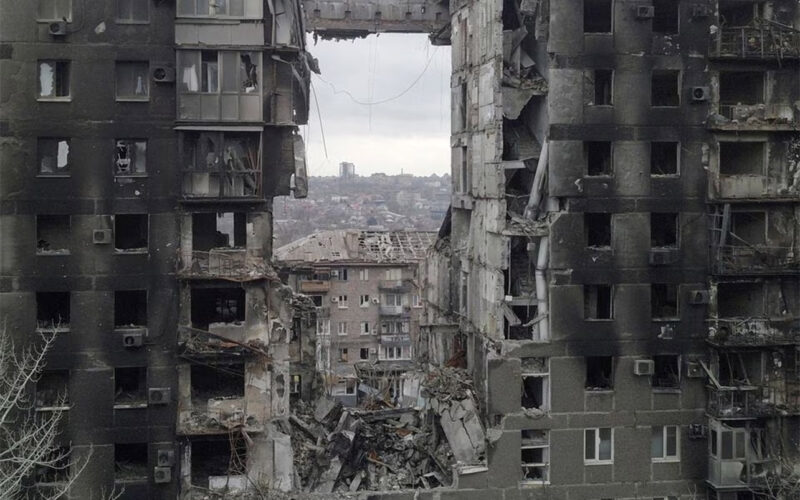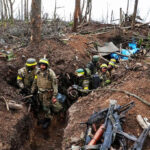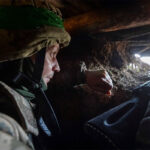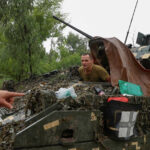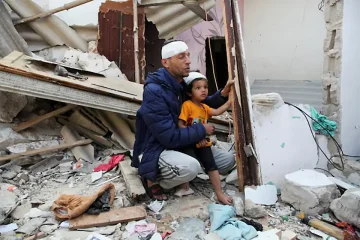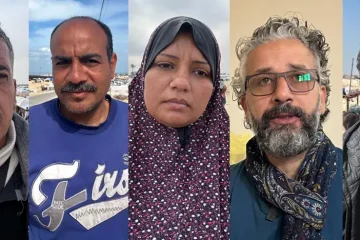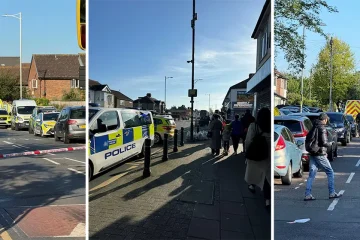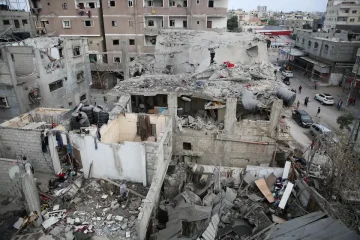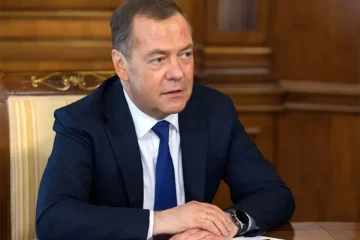[tta_listen_btn listen_text=”Audio” pause_text=”Pause” resume_text=”Resume” replay_text=”Replay”]
UKRAINE said it had driven Russian forces from an eighth village in its two-week-old counteroffensive, a settlement on a heavily fortified part of the front line near the most direct route to the country’s Azov Sea coast.
A Russian-installed official said on Sunday that Ukraine had taken control of the village, Piatykhatky, in the southern Zaporizhzhia region. He later said Moscow had pushed them out and on Monday morning he said Ukraine was attacking again.
Ukraine’s Deputy Defence Minister Hanna Maliar said Ukrainian forces had not only retaken Piatykhatky but had advanced by up to seven km (4.3 miles) into Russian lines in two weeks, capturing 113 square km (44 square miles) of land.
“In the course of two weeks of offensive operations in the Berdiansk and Melitopol directions, eight settlements were liberated,” Maliar said on Telegram, referring to two cities on the Russian-occupied coastline.
The reported capture of the villages reflects incremental gains for Ukraine that highlight the challenge of breaking through lines Moscow has spent months strengthening. Piatykhatky is significant, however, as it lies around 90 km from the coast.
Ukrainian President Volodymyr Zelenskiy hailed the efforts of the troops and said he would continue talks with Western allies to get weapons and ammunition supplies to them as soon as possible.
Russia, hoping to dent Western resolve, said it had repelled numerous assaults and it released a video showing what its troops say is captured Western equipment, in this case, a French-made tank reportedly seized in the eastern Donetsk region. It did not mention Piatykhatky.
Ukraine has acknowledged attacks along several parts of the 1,000 km front line in its long-anticipated counteroffensive to retake the 18% of its territory occupied by Russia but carefully controls information for security reasons. Analysts say the main phase of the counteroffensive is yet to begin.
Both sides appear to have taken heavy losses in recent fighting and both say the other side’s are greater.
“The enemy’s ‘wave-like’ offensives yielded results, despite enormous losses,” Russian-installed official Vladimir Rogov said on Telegram in reporting the Piatykhatky fighting.
An unidentified soldier in a Ukrainian Defence Ministry video said: “The Russians ran away leaving equipment and ammunition. Glory to Ukraine!”
Reuters confirmed it was filmed in Piatykhatky but was unable to verify the Sunday date on it.
The conflict has killed thousands of civilians, destroyed towns and cities and driven millions of people from their homes while exacerbating global inflation and reshaping security arrangements.
On a visit to Beijing, U.S. Secretary of State Antony Blinken said he had asked the Chinese government to be very vigilant on the possibility that Chinese firms may be providing Russia with technology that it can use in the war in Ukraine.
Russia says it invaded Ukraine to “denazify” it, an argument Ukraine and its Western allies call a pretext for a land grab.
Legislators in Sweden, which applied to join NATO last year following the invasion, said on Monday Russia was now seen as posing a long-term threat to both European and global security.
REDEPLOYMENT?
While Ukraine conducts what Western governments and analysts say are probing attacks to test Russian forces, officials from two NATO member states said Moscow is redeploying some of its forces as it seeks to predict where Ukraine will strike.
British and Estonian intelligence officials said that Russia had been moving some forces east along the front line from areas south of the Dnipro River flooded by the destruction of the huge Kakhovka hydroelectric dam on June 6.
Estonia said the Ukrainians were approaching the counteroffensive methodically.
“We won’t see an offensive over the next seven days,” Estonia’s ERR news quoted the commander of the Estonian Defense Forces intelligence centre, Colonel Margo Grosberg, as saying on Friday.
Russia and Ukraine have blamed each other for the unleashing of the vast reservoir. Flooding has destroyed homes and farmland along both sides of the front line in the Kherson region. The death toll has risen to 52, with more than 11,000 people evacuated.
Moscow and Kyiv have blamed each other for the attack, while a team of legal experts helping Ukraine investigate said on Friday it was “highly likely” that the dam’s collapse was caused by explosives planted by Russians.
The flooding has made any cross-river attack in the area exceedingly difficult, Michael Kofman, a military analyst, wrote on Twitter, although it would always have been a risky operation.
Ukrainian officials say more than half of the areas affected by the flooding lie on the Russian-occupied side of the river and Russia’s Defence Ministry warned that mosquito-borne diseases such as West Nile Fever could break out in the area.
The United Nations said on Sunday that Moscow had declined its help to assist residents affected by the breach.
“Aid cannot be denied to people who need it,” said Denise Brown, U.N. humanitarian coordinator for Ukraine.
The Kremlin said Russia’s decision was motivated by security concerns and “other nuances”.

